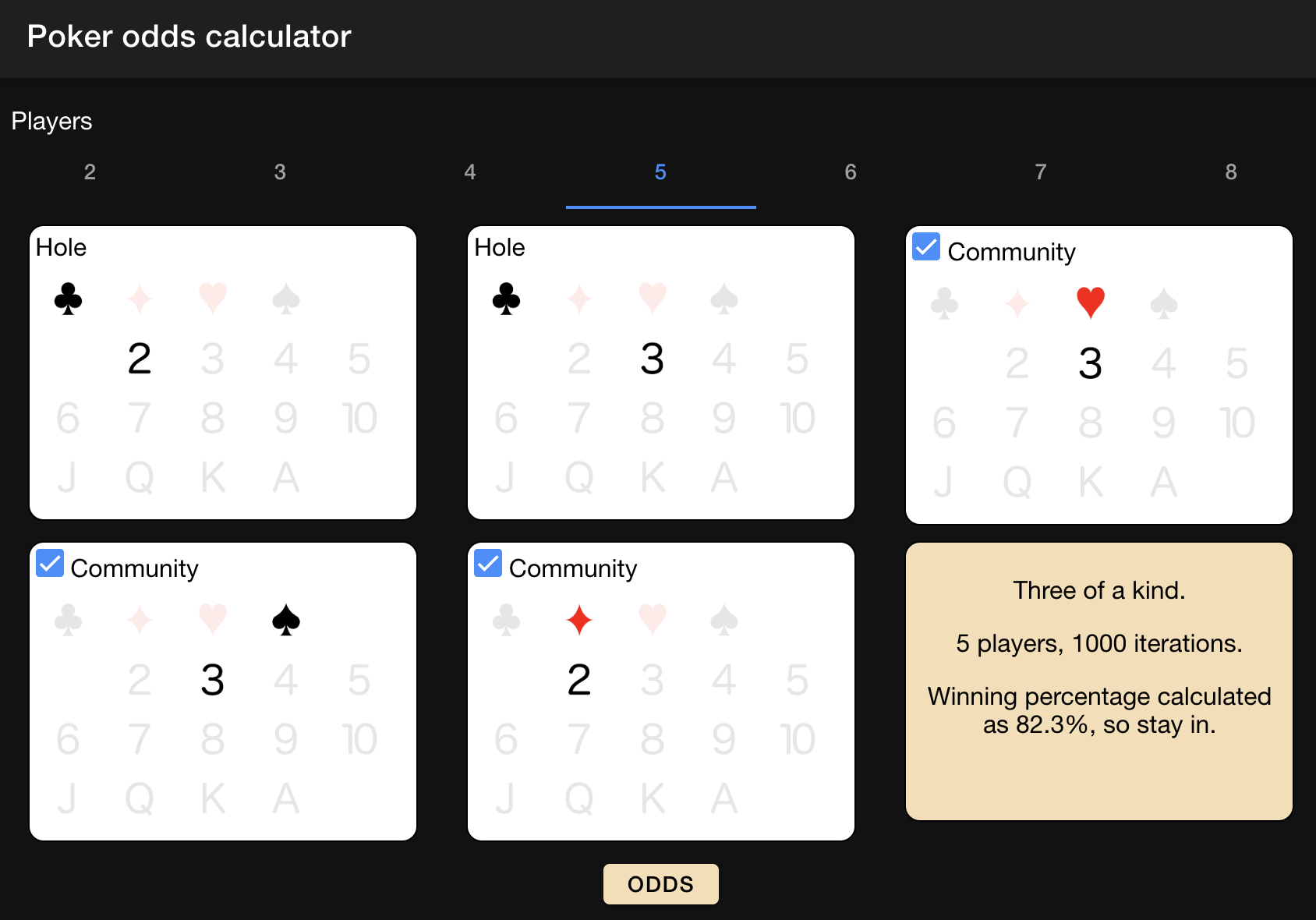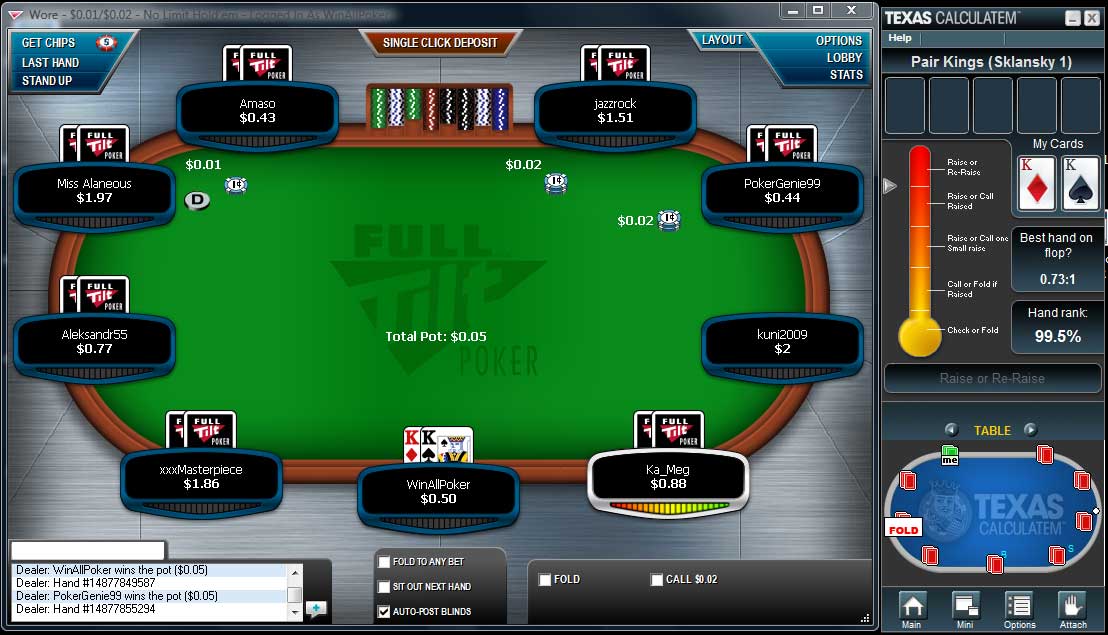1000 1 Odds Calculator
How to Work Out Implied Probability From Decimal Odds. Divide 1 by the decimal, and multiply it by 100%. Equation: (1/ decimal odds). 100 = implied probability Example: 1 /4.00. 100 = 25% Find other bet calculators and interesting offers, like the bet365 bonus code, on mybettingsites.co.uk. FAQ – Frequently Asked Questions about Odds Converting. When it comes to decimal odds, your stake is always factored into the return that you calculate but this is not the case when following the fraction method. In terms of the latter, if you put £1 on odds of 4/1 you will receive £4 in profit but also get your £1 stake back too – so £5 in total.

Calculate your potential profits for (+) American odds bets with the following equation. Profit = (Stake x Odds)/100. Profit = (Stake x Odds)/100. So, we’ll use the above equation and our previous example. If we bet a $100 stake, calculate what you will win from your wager: Profit = ($100 x +200)/100. Probability to Odds Calculator. More about the Probability to Odds Calculator so that you can better understand the elements used in this calculator. It is common for people to have a confusion between the concepts of odds and probability, and often times, they incorrectly use them, most typically interchanging probability by odds.
Welcome to the Sports Betting Odds section of The Sports Geek. If you are new to sports betting and don’t understand how to read betting odds (+150, -110, +2200, etc) we will lay it all out for you and help you learn how the betting odds work.
Betting Site | Bonus | Bet Now | |
|---|---|---|---|
| 1 | up to €30 Free Bet | Go to Site | |
| 2 | 22Bet | 100% up to €122 | Go to Site |
| 3 | 100% up to €200 | Go to Site | |
| 4 | 10Bet | 100% up to €50 | Go to Site |
| 5 | 100% up to €50 | Go to Site |
Sports Betting Odds Explained
Many people don’t know how to read or calculate sports betting odds, so below we have done our best on explaining how betting odds work. The most common type of sports betting odds used in North America are the American style odds which we explain below.
American Style Sports Betting Odds
Most online sportsbooks will list their odds in what is called “American Odds”. There are a couple different versions of sports betting odds, but these American Odds are the most common odds used. Reading and understanding sports betting odds can bet a little confusing to beginners, so we have provided an example below using two NFL football teams:

American Odds
- Matchup Odds
- New England Patriots +120
- Pittsburgh Steelers -140
The number shown in the bracket represents the odds. The American Odds have two components to them, the first being the positive or negative sign, and the second being the number that follows the sign.
The sign in front of the number indicates whether placing a wager on that outcome will pay out more money then you have wagered or less money then you have wagered. If the odd is negative (-) it means that outcome is more likely to happen and placing a bet on that outcome would payout less than the amount you wagered, while a positive (+) odd shows that the outcome is less likely to happen and it would pay out more than the amount you wagered.
The next step is figuring out exactly how much the bet pays out, which is where the numbers in the odds come into play.
A listed odd with a – sign in front of it, such as the -140 in our example above, shows us how much money you would need to wager in order to win $100. So using the -140, this would show us that you would need to bet $140 in order to win $100 in profits. You can easily substitute the $100 bet for a $10 bet by moving the decimal place over one spot, showing us that you would need to wager $14 in order to win $10 in profits.
Examples:
A listed odd with a + sign in front of it, such as the +120 in our example above, shows us how much money you would win on a $100 bet. Using the +120 odds, it shows us that a $100 bet on that outcome would pay out $120 in profits. Again this can easily be converted into smaller or larger size bets. A $10 bet on +120 odds would pay out $12 in profits.
Examples:

Odds Calculator Math
Below is an example of NFL betting odds taken from an online betting site.
20 To 1 Odds Calculator


In this example you can see Los Angeles is listed at +130 ($100 bet pays $130 plus of course your original wager back) and New England is listed at -150 ($150 bet pays $100).
Odds Against Calculator
The great thing about betting online is that the online sportsbooks will do the calculations for you before you place your bet. You can click on the outcome or team you would like to bet on, and then input the amount you wish to wager and it will show you your potential pay out before you confirm your bet.
Ready To Start Betting?MyBookie and BetUS are my two favorite sportsbooks and make betting very easy. You will also get a Free Money Bonus at each sportsbook if you follow either link above.
Decimal Style Sports Betting Odds
Odds Probability Calculator
Decimal style odds are used mostly in Europe, and are pretty easy to understand. To calculate the decimal style odds all you will need to do is simply multiply the amount you wish to wager by the decimal odds shown and you will get your payout. For example it may look something like this:
If you wanted to place a $10 wager on the USA at 2.40 you would simply need to multiply your $10 wager by the 2.40 odds (10 x 2.40) to find out that the payout is $24. It is important to realize that with decimal style odds it includes the amount you wagered, so to find out profits you would need to subtract your wager ($24 – $10) to find out your potential payout is $14 in profits.
If you wanted to place a $10 wager on Brazil you would again just multiply $10 x 1.55 to find out that you would win $15.50 total or $5.50 in profits.
1000 1 Odds Calculator
Decimal style betting odds are very simple to understand, but you won’t see them displayed in many North American sportsbooks. With that said, most online betting sites will allow you to chose the style of betting odds you want displayed, with American odds set as the default.